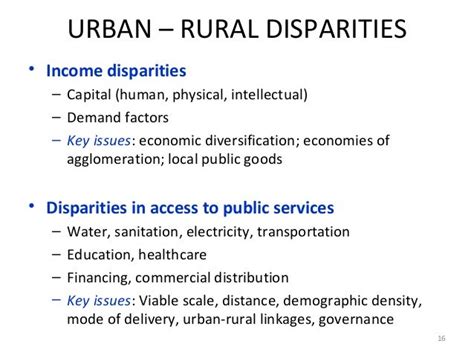Poverty Reduction: A Top National Priority
Poverty alleviation has been a top priority for the Chinese government, with clear goals and targeted measures implemented at all levels. The white paper emphasizes China’s commitment to eradicating extreme poverty by 2020, in line with the UN 2030 Agenda for Sustainable Development.
Key Milestones in China’s Poverty Alleviation Efforts
| Year | Milestone |
|---|---|
| 1978 | China begins its reform and opening-up policy |
| 1986 | The Chinese government establishes the Leading Group for Poverty Alleviation and Development |
| 2000 | China launches the “Eight-Seven Poverty Alleviation Plan” targeting 80 million people in 7 years |
| 2013 | President Xi Jinping proposes the concept of “targeted poverty alleviation” |
| 2015 | China commits to eliminating extreme poverty by 2020 |
A Multifaceted Approach to Poverty Alleviation
China’s Poverty-alleviation strategy encompasses a wide range of measures, including:
- Targeted assistance: Identifying poor households and individuals, and providing them with tailored support based on their specific needs and conditions.
- Industrial development: Promoting industries with local advantages to create sustainable income sources for the poor.
- Education and training: Improving access to education and vocational training to enhance the skills and employability of the poor.
- Healthcare: Ensuring access to basic healthcare services and medical insurance for the poor.
- Infrastructure development: Investing in infrastructure such as roads, electricity, and clean water to improve living conditions and connectivity in poor areas.
Targeted Poverty Alleviation: A Closer Look
The targeted poverty alleviation approach focuses on identifying and assisting poor households based on their specific circumstances. This involves:
- Accurate identification of the poor through household surveys and assessments
- Tailored assistance plans based on each household’s needs and potential
- Assigning government officials to oversee and support poverty alleviation efforts at the local level
- Regular monitoring and evaluation to track progress and adjust strategies as needed
Remarkable Achievements in Poverty Reduction
China’s poverty-alleviation efforts have yielded impressive results:
- Between 1978 and 2020, China lifted over 800 million people out of poverty, accounting for over 70% of global poverty reduction during this period.
- The poverty headcount ratio fell from 97.5% in 1978 to 0.6% in 2020, based on the current poverty line of RMB 2,300 per person per year (in 2010 constant prices).
- The income gap between urban and rural residents has narrowed, with the ratio of per capita disposable income falling from 3.33 in 2009 to 2.64 in 2019.
Poverty Reduction Progress in China (1978-2020)
| Year | Rural Poor Population (million) | Poverty Headcount Ratio (%) |
|---|---|---|
| 1978 | 770.39 | 97.5 |
| 1990 | 658.49 | 73.5 |
| 2000 | 462.24 | 49.8 |
| 2010 | 165.67 | 17.2 |
| 2020 | 5.51 | 0.6 |

Challenges and Future Prospects
Despite the remarkable progress made, China still faces challenges in consolidating its poverty alleviation achievements and promoting sustainable development in poor areas. These challenges include:
- Preventing the relapse into poverty for those who have been lifted out
- Addressing relative poverty and income inequality
- Promoting sustainable and environmentally-friendly development in poor areas
- Enhancing the resilience of poor communities to natural disasters and public health emergencies
To address these challenges, China is committed to continuing its targeted poverty alleviation efforts, while also focusing on rural revitalization and promoting sustainable development. Key measures include:
- Strengthening the monitoring and assistance mechanisms for those who have been lifted out of poverty
- Promoting industries with local advantages and enhancing the skills of the rural workforce
- Improving public services and social security systems in rural areas
- Encouraging the participation of private sector and social organizations in poverty alleviation and rural development efforts
Frequently Asked Questions (FAQ)
-
Q: What is the definition of poverty in China?
A: China’s current poverty line is set at RMB 2,300 per person per year (in 2010 constant prices), which takes into account both income and living standards. -
Q: How does China identify poor households and individuals?
A: China conducts household surveys and assessments to accurately identify the poor based on their income, living conditions, and access to basic services. -
Q: What are some key industries promoted in poor areas for poverty alleviation?
A: Key industries promoted in poor areas include agriculture, tourism, e-commerce, and labor-intensive manufacturing, depending on the local advantages and resources. -
Q: How does China ensure the effectiveness of its poverty alleviation efforts?
A: China assigns government officials to oversee poverty alleviation efforts at the local level, and conducts regular monitoring and evaluation to track progress and adjust strategies as needed. -
Q: What are China’s plans for promoting sustainable development in poor areas?
A: China is focusing on rural revitalization and promoting sustainable development through measures such as enhancing the skills of the rural workforce, improving public services and social security systems, and encouraging the participation of private sector and social organizations in poverty alleviation and rural development efforts.
China’s targeted poverty-alleviation strategy has proven to be highly effective in lifting hundreds of millions out of poverty and promoting inclusive development. As the country continues to consolidate its achievements and address new challenges, its experience and lessons learned can provide valuable insights for other developing countries in their efforts to eradicate poverty and achieve sustainable development.

No responses yet